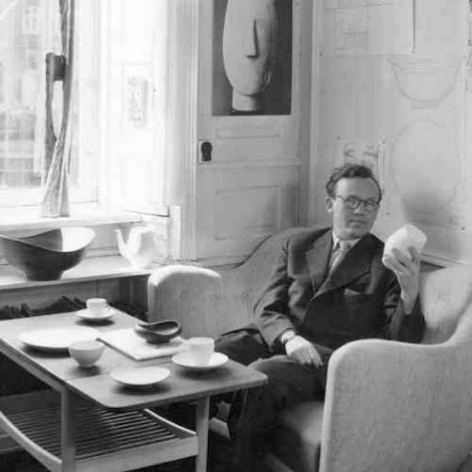15% off with DESIGN15

This eye-shaped, three-legged table was originally designed to match the 46 Sofa. The shape of the table fits perfectly with the curve of the sofa, and hence creating a design unity between the two pieces.
The small table with the characteristic and organic eye-shape is also a perfect complement to the Poet Sofa and fits almost any design style - particularly as a side table for a lamp, a vase of flowers or a pile of books.
The Eye Table, with the soft curves, is available in various combinations. The table is manufactured in oak or walnut and comes with a tabletop in veneer or high gloss laminate in black or white.
Materials Frame and edges in solid oak or walnut, tabletop in veneer or high gloss laminate in black or white
Dimensions 90 x 56 x H50 cm – Weight 10 kg
Eye Table
from
soaped oak
white oiled oak
oiled oak
clear lacquered oak
clear lacquered walnut
oiled walnut
Finn Juhl

As a teenager, Finn Juhl (1912-1989) wanted to become an art historian, having a passion for the fine arts since childhood. His father stopped him and Finn Juhl started architectural studies. Later, when his fame as a designer of furniture acquired, he speaks of himself as an autodidact, in reference to this upset vocation that forced him to walk intellectually on a lonely way. His style owes much to this singular trajectory, with its non academic interpretation of art visible in his work. Finn Juhl started his studies in 1930, a key period which saw the birth of modern design and furniture.
His modern offices in central Copenhagen was greeting his visitors with a huge Japanese fish in paper, symbol of imagination. Rather than thinking in terms of practical construction, Finn Juhl had the mind-set of a sculptor, when he shaped a piece of furniture. In the 1940s and 1950s, this way of working had never been seen before. His ambition was to design furniture with movement and life.
Juhl took pride in making both the structurally supportive elements of the furniture and the seated person look as though they are floating. In some of his chairs, the backrest and the seat are almost invisibly joined, as if they were clouds floating through the room.
In creating his furniture, Finn Juhl worked with two elements: The carrying element, and the carried. He eventually became known for his special ability to separate the bearing parts from the borne. This is one of many examples of how he broke free from conventional working methods and found his inspiration in art.
Ce site web utilise les cookies techniques pour fonctionner.
Vous pouvez les refuser, mais perdrez alors la possibilité d'acheter.
OK
Refuser